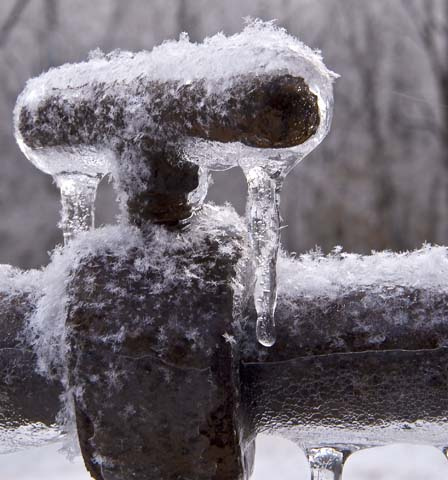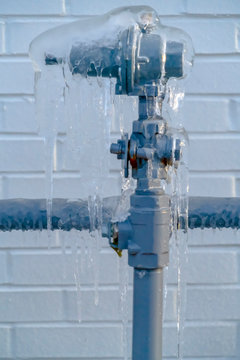Essential Advice for Preventing Frozen Pipes in Cold Weather Conditions
Essential Advice for Preventing Frozen Pipes in Cold Weather Conditions
Blog Article
Any individual seems to have their own individual way of thinking involving Prevent Frozen Pipes .

Cold weather can wreak havoc on your plumbing, specifically by freezing pipelines. Here's just how to prevent it from taking place and what to do if it does.
Introduction
As temperatures decline, the danger of icy pipes increases, potentially causing expensive fixings and water damage. Recognizing just how to prevent frozen pipes is vital for property owners in cold climates.
Understanding Frozen Pipes
What triggers pipelines to ice up?
Pipes freeze when subjected to temperatures listed below 32 ° F (0 ° C) for prolonged periods. As water inside the pipelines freezes, it increases, taxing the pipe walls and possibly triggering them to rupture.
Risks and problems
Frozen pipes can bring about water disruptions, building damages, and costly fixings. Ruptured pipelines can flood homes and trigger substantial architectural damages.
Signs of Frozen Pipes
Determining icy pipes early can avoid them from breaking.
Exactly how to recognize icy pipelines
Try to find reduced water flow from taps, uncommon odors or noises from pipelines, and noticeable frost on revealed pipelines.
Prevention Tips
Shielding prone pipelines
Wrap pipes in insulation sleeves or use warmth tape to secure them from freezing temperature levels. Concentrate on pipelines in unheated or outside locations of the home.
Home heating techniques
Keep interior spaces properly heated, especially locations with plumbing. Open cabinet doors to permit warm air to circulate around pipelines under sinks.
Shielding Outside Pipes
Garden pipes and exterior faucets
Disconnect and drain pipes garden hoses before winter months. Install frost-proof faucets or cover outside taps with insulated caps.
What to Do If Your Pipes Freeze
Immediate actions to take
If you believe frozen pipes, maintain taps open to ease pressure as the ice melts. Make use of a hairdryer or towels taken in warm water to thaw pipelines gradually.
Long-Term Solutions
Structural changes
Think about rerouting pipes far from exterior wall surfaces or unheated locations. Include additional insulation to attic rooms, basements, and crawl spaces.
Updating insulation
Purchase top quality insulation for pipes, attics, and walls. Proper insulation aids keep constant temperature levels and lowers the risk of frozen pipelines.
Final thought
Preventing frozen pipelines calls for positive steps and fast reactions. By understanding the reasons, indications, and safety nets, property owners can secure their pipes during winter.
5 Ways to Prevent Frozen Pipes
Drain Outdoor Faucets and Disconnect Hoses
First, close the shut-off valve that controls the flow of water in the pipe to your outdoor faucet. Then, head outside to disconnect and drain your hose and open the outdoor faucet to allow the water to completely drain out of the line. Turn off the faucet when done. Finally, head back to the shut-off valve and drain the remaining water inside the pipe into a bucket or container. Additionally, if you have a home irrigation system, you should consider hiring an expert to clear the system of water each year.
Insulate Pipes
One of the best and most cost-effective methods for preventing frozen water pipes is to wrap your pipes with insulation. This is especially important for areas in your home that aren’t exposed to heat, such as an attic. We suggest using foam sleeves, which can typically be found at your local hardware store.
Keep Heat Running at 65
Your pipes are located inside your walls, and the temperature there is much colder than the rest of the house. To prevent your pipes from freezing, The Insurance Information Institute suggests that you keep your home heated to at least 65 degrees, even when traveling. You may want to invest in smart devices that can keep an eye on the temperature in your home while you’re away.
Leave Water Dripping
Moving water — even a small trickle — can prevent ice from forming inside your pipes. When freezing temps are imminent, start a drip of water from all faucets that serve exposed pipes. Leaving a few faucets running will also help relieve pressure inside the pipes and help prevent a rupture if the water inside freezes.
Open Cupboard Doors
Warm your kitchen and bathroom pipes by opening cupboards and vanities. You should also leave your interior doors ajar to help warm air circulate evenly throughout your home.

We were brought to that article on How to prepare your home plumbing for winter weather from an associate on our other web address. If you enjoyed our blog post please consider to share it. I take joy in reading our article about How To Avoid Freezing Pipes.
Maintenance Sign-Up Report this page